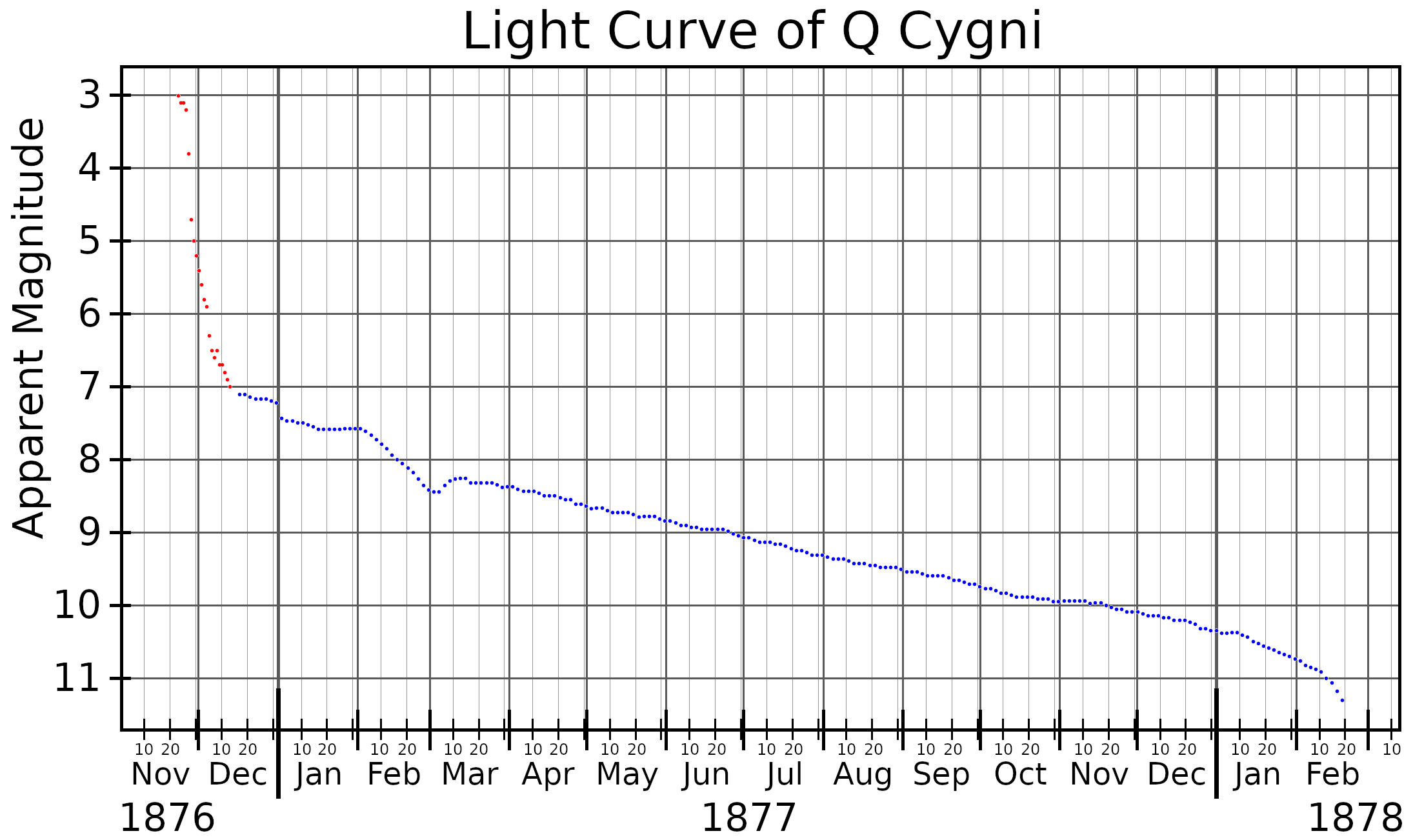Q Cygni on:
[Wikipedia]
[Google]
[Amazon]
 Q Cygni (Q Cyg), is a star located in the constellation Cygnus. It is also known as Nova Cygni 1876, and has the designation NGC 7114, and HR 8296. Nova Cygni is located in the northwestern portion of Cygnus along the border with
Q Cygni (Q Cyg), is a star located in the constellation Cygnus. It is also known as Nova Cygni 1876, and has the designation NGC 7114, and HR 8296. Nova Cygni is located in the northwestern portion of Cygnus along the border with
Stars of Cygnus
{{Stars of Cygnus Cygnus (constellation) Novae 8296 J21414393+4250290 Durchmusterung objects NGC objects Cygni, Q
 Q Cygni (Q Cyg), is a star located in the constellation Cygnus. It is also known as Nova Cygni 1876, and has the designation NGC 7114, and HR 8296. Nova Cygni is located in the northwestern portion of Cygnus along the border with
Q Cygni (Q Cyg), is a star located in the constellation Cygnus. It is also known as Nova Cygni 1876, and has the designation NGC 7114, and HR 8296. Nova Cygni is located in the northwestern portion of Cygnus along the border with Lacerta
Lacerta is one of the 88 modern constellations defined by the International Astronomical Union. Its name is Latin for lizard. A small, faint constellation, it was defined in 1687 by the astronomer Johannes Hevelius. Its brightest stars form a "W" ...
.
One of the earliest novae recorded, Q Cygni was discovered by astronomer Johann Friedrich Julius Schmidt
Johann Friedrich Julius Schmidt (25 October 1825 in Eutin, Germany – 7 February 1884 in Athens, Greece) was a German astronomer and geophysicist. He was the director of the National Observatory of Athens in Greece from 1858 to 1884. Julius Schmi ...
on November 24, 1876. The star had undergone a nova, brightening to about 3rd magnitude
Magnitude may refer to:
Mathematics
*Euclidean vector, a quantity defined by both its magnitude and its direction
*Magnitude (mathematics), the relative size of an object
*Norm (mathematics), a term for the size or length of a vector
*Order of ...
and remaining as bright for four days.
The system is termed a cataclysmic variable
In astronomy, cataclysmic variable stars (CVs) are stars which irregularly increase in brightness by a large factor, then drop back down to a quiescent state. They were initially called novae (), since ones with an outburst brightness visible t ...
, composed of a white dwarf
A white dwarf is a stellar core remnant composed mostly of electron-degenerate matter. A white dwarf is very dense: its mass is comparable to the Sun's, while its volume is comparable to the Earth's. A white dwarf's faint luminosity comes ...
in close orbit
In celestial mechanics, an orbit is the curved trajectory of an object such as the trajectory of a planet around a star, or of a natural satellite around a planet, or of an artificial satellite around an object or position in space such as ...
with another star that orbit each other every 10 hours. The white dwarf is surrounded by an accretion disc
An accretion disk is a structure (often a circumstellar disk) formed by diffuse material in orbital motion around a massive central body. The central body is typically a star. Friction, uneven irradiance, magnetohydrodynamic effects, and other ...
, which blazes much brighter than the star it circles. The system has been estimated to be 740 ± 11 parsecs distant. The secondary star has been estimated to be around 0.6 times as massive as the Sun, making it an orange dwarf of spectral type K5. Also known as a donor star, the secondary supplies mass to the white dwarf via its accretion disc.
A small nebulous disc was reported around the nova and this led to it being listed in the New General Catalogue as a possible planetary nebula
A planetary nebula (PN, plural PNe) is a type of emission nebula consisting of an expanding, glowing shell of ionized gas ejected from red giant stars late in their lives.
The term "planetary nebula" is a misnomer because they are unrelate ...
. No nebulosity is visible in modern observations and the Revised New General Catalogue
The ''New General Catalogue of Nebulae and Clusters of Stars'' (abbreviated NGC) is an astronomical catalogue of deep-sky objects compiled by John Louis Emil Dreyer in 1888. The NGC contains 7,840 objects, including galaxies, star clusters an ...
lists this as a "non-existent" object.
References
External links
Stars of Cygnus
{{Stars of Cygnus Cygnus (constellation) Novae 8296 J21414393+4250290 Durchmusterung objects NGC objects Cygni, Q